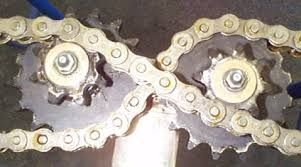psneeld
Guru
Let's back up a moment to the OP.
Loop boat with twins.
Lots of options...miles of slow speed, miles of slightly higher speed, miles of near unlimited speed.
remote ops in some areas....good reason for twins...but not necessary...
But if you have them...running on one in the areas of slow speeds...maybe a good idea.
Not only do you save fuel in some cases if the speed is in the right range, there is less wear and tear on engines, less noise, fewer oil changes/general maintenance...and more that I haven't bothered to think through right now.
So to answer the OP...it is something that should be explored...and as I posted before possible...but at some point you may never get a "good" answer without your own experimentation or buying a duplicate and operating it the same way of someone else did and you trust their numbers.
Loop boat with twins.
Lots of options...miles of slow speed, miles of slightly higher speed, miles of near unlimited speed.
remote ops in some areas....good reason for twins...but not necessary...
But if you have them...running on one in the areas of slow speeds...maybe a good idea.
Not only do you save fuel in some cases if the speed is in the right range, there is less wear and tear on engines, less noise, fewer oil changes/general maintenance...and more that I haven't bothered to think through right now.
So to answer the OP...it is something that should be explored...and as I posted before possible...but at some point you may never get a "good" answer without your own experimentation or buying a duplicate and operating it the same way of someone else did and you trust their numbers.



